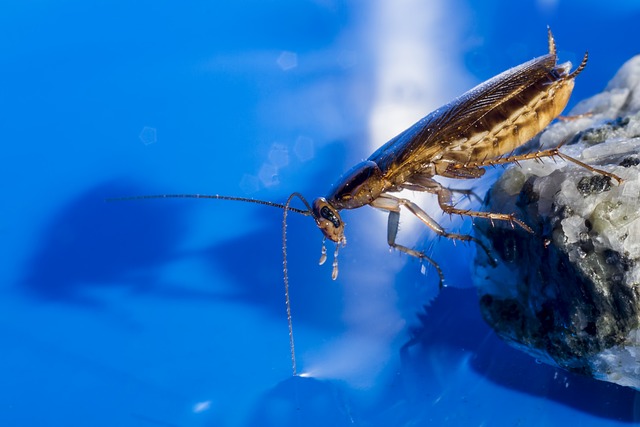Cockroach infestations can turn a cozy home into a battleground. These pests cause havoc on multiple fronts, from contaminating food supplies to triggering allergies and damaging property.
One telltale sign of an invasion is the discovery of hatched cockroach eggs, a grim reminder of the unwelcome guests lurking within your walls. In this guide, we’ll teach you everything you need to know about cockroach eggs, their risks, and how you can send them packing.
Understanding Cockroach Reproduction
Cockroaches have a lifecycle that allows for rapid population growth, especially in favorable conditions. They go through three main stages: egg, nymph, and adult. These stages vary in duration depending on factors like species, temperature, and food availability.
Female cockroaches produce egg cases, known as ootheca, each containing multiple eggs. These egg cases are often deposited in dark, secluded areas, providing protection from predators and the environment.
Once laid, the eggs develop within the ootheca until they hatch into nymphs. The number of eggs per ootheca and the frequency of egg laying differ among cockroach species, but some roaches can lay up to 50 or more!
Cockroaches usually reach maturity at varying stages, depending on their species. For instance, German cockroaches typically mature in about 60 to 100 days, while American cockroaches may take up to 160 days.
Once cockroaches reach this stage, they’re ready to reproduce. Consequently, infestations can quickly escalate as the reproductive cycle continues.
These pests are prolific breeders, and females can produce multiple egg cases throughout their lifespan. Once you spot an infestation, you’ll need to act quickly to curb its spread and prevent further population growth.
Signs of Hatched Cockroach Eggs
When nymphs hatch, they often leave behind empty egg casings. Like eggs, these casings are brown or dark brown with a distinct elongated shape. Looking closer, you may even notice small openings at the end of the casings where nymphs crawled from.
If you find small nymphs in or around the hatched cockroach eggs, you could have a severe growing infestation on your hands. Nymphs resemble smaller versions of adult cockroaches but lack fully developed wings. They are typically lighter in color and may appear translucent or white immediately after hatching before gradually darkening as they molt and mature.
In addition to the hatched cockroach eggs, here are some other signs of an infestation:
- Fecal droppings: Cockroach feces resemble tiny, dark specks or pellets and may be found where cockroaches frequent, like kitchen cabinets, pantry shelves, or behind appliances.
- Musty odor: A strong, musty odor often accompanies cockroach infestations, particularly in areas with high cockroach activity. This odor is caused by cockroaches’ secretion of pheromones and fecal matter.
- Damage to food packaging: Cockroaches can gnaw through paper, cardboard, and plastic packaging to access food sources. Finding chew marks or holes in food packaging may indicate the presence of cockroaches or other pantry pests like rodents or Indian meal moths.
Risks of Cockroach Infestations
Cockroach infestations can cause significant problems, ranging from health hazards to hygiene concerns.

Health Hazards
Cockroaches can carry various pathogens, bacteria, and allergens that contaminate surfaces and food and even impact indoor air quality. Through their feces, saliva, and shed skin, they can transmit diseases like salmonellosis, typhoid fever, dysentery, and gastroenteritis.
Additionally, cockroach allergens can trigger asthma attacks and exacerbate allergies, particularly in sensitive individuals. In fact, exposure to cockroach allergens has been linked to respiratory issues, including coughing, wheezing, and chest tightness.
Sanitation Concerns
Hatched cockroach eggs do more than just indicate an infestation—they can significantly compromise hygiene and sanitation standards in both residential and commercial settings.
Cockroaches hang around unclean spaces to find food, with sewers, garbage receptacles, and decaying organic matter benign as their haunts of choice. As they travel through these contaminated areas, they accumulate pathogens and bacteria in their bodies.
Subsequently, they transfer these harmful microorganisms to surfaces, utensils, and food items within your living environment whenever they invade.
Plus, cockroaches aren’t tidy roommates. These pests will leave their feces and urine behind wherever they roam, particularly in highly infested areas such as walls, under appliances, or kitchen cabinets.
Hatched Cockroach Eggs: Prevention & Control
Regularly wiping down kitchen surfaces, floors, and appliances eliminates food crumbs and spills that attract roaches. To deprive roaches of food and moisture sources, keep sinks and drains clear of food debris and standing water.
Seal entry points using caulk or weather stripping to prevent roaches from sneaking into buildings. Pay special attention to areas around pipes, vents, and utility lines, as these are common entry points for roaches.
Store food items in airtight containers and keep countertops clean to deny roaches easy access to food. Regularly clean up spills and crumbs, and promptly empty garbage cans to make indoor spaces less attractive to insects.
Proper waste management, like sealing food scraps and maintaining cleanliness around pet food storage areas, further discourages roach activity.
For severe infestations or persistent roach problems, seek professional pest control services. Our pest control experts have the knowledge and tools to effectively identify hatched cockroach eggs and treat cockroach infestations—keeping them gone.
For top-tier pest control in your area, contact us here at proof.!

